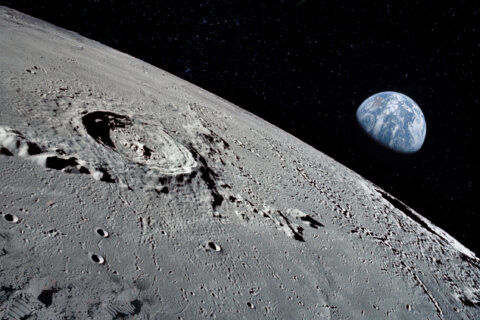Jason Fraley, WTOP film critic
WASHINGTON – Love it or hate it, “Citizen Kane” (1941) has long been the gold standard for film academics. In the 50 years that Sight and Sound magazine has polled international critics for their list of history’s best films, Orson Welles’ masterpiece has ranked No. 1 every time.
Now, the king has fallen.
There’s a new movie that will be scoured over and taught to every film student on the planet, if it’s not already. And I’m thrilled to say it’s my favorite movie of all time.
Alfred Hitchcock’s “Vertigo” (1958) just topped Sight and Sound’s latest international critics poll, to be officially published in the September issue. The poll is its most extensive yet, surveying 846 critics and experts from around the world, which explains the historical and academic slant to the choices. Both “Vertigo” and “Citizen Kane” require repeat viewings to truly grasp their brilliance, and if you’re one who doesn’t get the hype, I’ve constructed my best case for each:
- The case for “Vertigo“
- The case for “Citizen Kane“
Together, Hitchcock and Welles will teach you an entirely new way of viewing movies: through the cinematic eye. That is, if you’re willing to learn.
Cream of the crop slowly rises
Upon the film’s release, “Vertigo” was overlooked at the box office and shunned by the experts. Like Vincent Van Gogh’s paintings or Johann Sebastian Bach’s music, Hitchcock’s masterpiece was not appreciated in its time. For decades, it was unavailable as one of the “Five Lost Hitchcocks,” as Hitchcock held the rights until his death in 1980. This absence left scholars little chance to reconsider, so when it finally resurfaced in the early ’80s, it was a critic’s dream 30 years in the making.
After decades of oversight, “Vertigo” came out of nowhere to place No. 7 on the 1982 Sight and Sound critics poll. However, it remained down at No. 61 on the American Film Institute’s first-ever Top 100 in 1997. I had just taken copious notes on the film as a labor of love, and as I uncovered the film’s layers upon layers of genius, I was appalled that it could place so low.
At the turn of the millennium, the “Hitchcock Masterpiece DVD Collection” began taking note, making “Vertigo” the only film with the word “masterpiece” on the cover. That’s saying a lot amidst “Psycho,” “Rear Window,” “The Birds,” “North by Northwest,” “Notorious,” “Rebecca” and “Shadow of a Doubt.”
AFI started coming to its senses in 2007, when “Vertigo” lept 52 spots ahead to No. 9 on the 10th anniversary list. Meanwhile, Sight and Sound bumped the film up to No. 2, just ahead of “Rules of the Game” (1939) and just behind “Citizen Kane.” Finally, this week Hitchcock’s cream officially rose to the top, as “Vertigo” topped the Sight and Sound 2012 list.
What’s “Vertigo” about?
Adapted from the French novel “D’Entre les morts” (“The Living and the Dead”), Vertigo begins with Det. John Scottie Ferguson (Jimmy Stewart) watching his partner fall to his death from a San Francisco rooftop. The event traumatizes him with acrophobia (a fear of heights), which gives him vertigo (an extremely disorienting dizziness). He recovers in the company of long-time friend Midge (Barbara Bel Geddes), who is hopelessly in love with him, until Scottie receives a random invitation to meet with an old college friend, Gavin Elster (Tom Helmore).
Elster offers the oddest proposal: “Do you believe that someone out of the past








